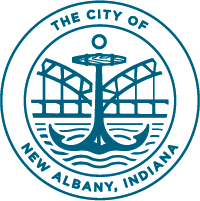New Albany Designated Tree City USA
/The City of New Albany has been designated “Tree City USA” by the Arbor Day Foundation.
“From our Urban Tree Canopy downtown, to the beautiful treescapes of the New Albany Loop Island Wetlands, and the Knobs that surround us, New Albany has some of the most beautiful natural views in Southern Indiana,” stated Mayor Jeff Gahan. “We will continue to protect and improve our local environment and wildlife habitat. Special thanks to Krisjans Streips and the Tree Board, the City Council, Ecotech, and the New Albany Redevelopment Commission for their work promoting the natural beauty of New Albany.”
The Tree City USA program has been greening up cities and towns across America since 1976. It is a nationwide movement that provides the framework necessary for communities to manage and expand their public trees.
More than 3,400 communities have made the commitment to becoming a Tree City USA. They have achieved Tree City USA status by meeting four core standards of sound urban forestry management: maintaining a tree board or department, having a community tree ordinance, spending at least $2 per capita on urban forestry and celebrating Arbor Day. The Tree City USA program provides direction, assistance and national recognition for your community.
Last year, a major tree planting project was initiated by the city, planting 276 new trees. Another phase, with hundreds of new tree plantings is expected later this year. This, combined with other efforts, including an inventory of all city trees, a management plan, and other initiatives qualified the City of New Albany for the “Tree City USA” designation.
Over the past few years, the City of New Albany completed an inventory study of all city-owned trees in the public rights-of-way and parks, and then utilized that study to draft a detailed management plan on how to improve and maintain the urban tree canopy. 7,777 sites are a part of the inventory, including 5,244 current trees, 197 stumps, and 2,336 vacant planting sites. Adding trees and improving the urban canopy were also a focus of the recent Comprehensive plan, approved in 2017.




